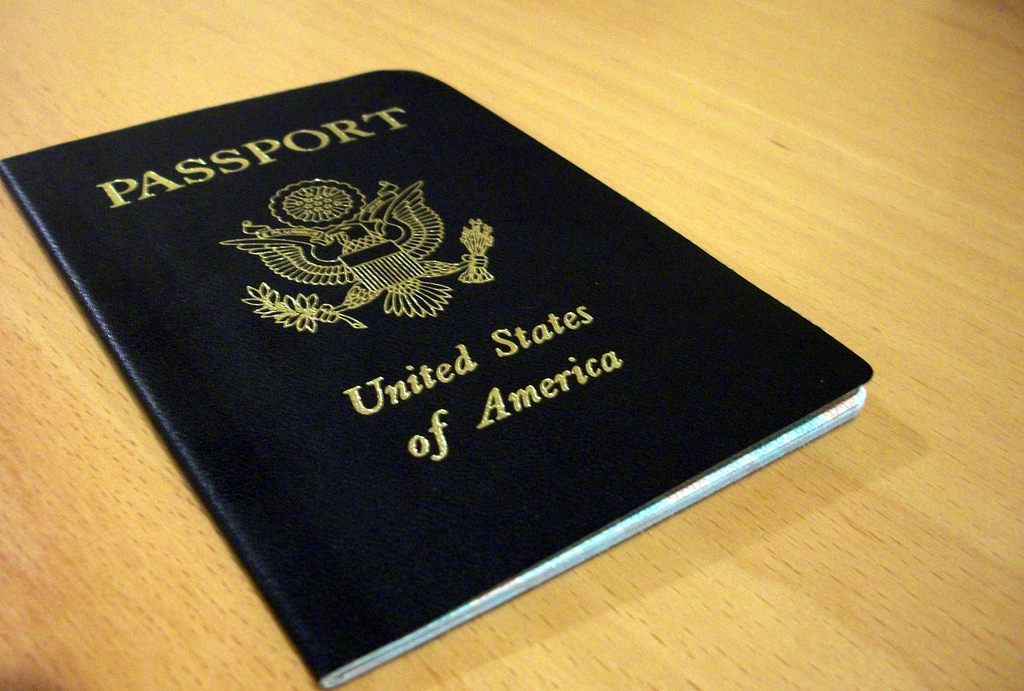A couple years ago at the Worldwide Radio Summit, Guy Dobson of Southern Cross Austereo chilled the room when he noted that international broadcasters used to flock to the U.S. to hear great radio, but since the ‘90s, that’s pretty much stopped. Why? Because there’s simply no driving reason for them to do so.
Fast-forward to 2016, and little has changed, except international broadcasters are still doing some pretty amazing stuff. World traveler, radio futurist, and good friend James Cridland truly has a global view of radio. As he moves around from continent to continent, James hears a l ot of radio, good and bad. For today’s “Guest List” feature, we asked James to give some thought to steering JacoBLOG readers in the best direction for coming up with new concepts and ideas.
ot of radio, good and bad. For today’s “Guest List” feature, we asked James to give some thought to steering JacoBLOG readers in the best direction for coming up with new concepts and ideas.
Leave your passport at home, and enjoy James’ “Top 5 Countries You Should Look At For Radio Ideas (besides the U.S.”
Hello, United States.
You’re famous for deeming the rest of the world as irrelevant when it comes to radio. This is a massive mistake, because there’s a ton of ideas you can get from radio markets throughout the rest of the world. In these markets, radio revenue is growing, and there’s a plethora of new ideas and new things to try. And, brilliantly, nobody will ever know you’ve stolen these ideas because nobody else is looking either! So, USA – take a look at the rest of the world and loot us for ideas. We’ve lots to give you.
1. The United Kingdom
When public radio has a 50% market share, you know that commercial radio will be working extra hard. And so it is; the UK is a country with growing radio revenues, growing radio listening, and an ecosystem that works well.
Look to the UK to see how brand consolidation and brand extensions work: a bunch of stations shed their heritage names and, instead, have started to use national brands: easier to promote to listeners and advertisers alike; and a ratings winner. Many have launched additional brand extension stations: rock format Absolute Radio doubled their TSL by adding six new stations focusing on different decades, public station BBC Radio 4 has a successful archive station, BBC Radio 4 Extra, and urban station KISS added new music station ‘KISS Fresh‘ and old-skool dance station ‘KISSTORY‘ with similar success.
Watch what happens when you work together, too. The UK Radioplayer – a not-for-profit organisation owned by the radio companies – has increased internet listening, made UK radio simple to hear online on a variety of different devices, and is now working on making in-car radio listening as good as it possibly can be.
The UK, too, is the world’s most multi-platform country for radio consumption, but snapping on its heels is…
2. Norway
A country where they’re turning off FM in 2017, focusing on digital broadcasting via DAB+ (a different type of radio receiver), internet, and through the TV. Listeners throughout the country will move from access to only a few national stations to over twenty. Public radio broadcaster NRK’s launch of P1+, an older-skewed digital version of their successful P1 channel, was so successful that these new radio sets sold out.
All the research shows that this won’t fail; but this is a gutsy, exciting move from a country that has a strong radio tradition and a wide variety of channels on-air: including, soon, KISS and KISSTORY as their formats jump over to the Nordic countries.
From KISS to KIIS as we go down under to….
3. Australia
A great radio market, with strong commercial radio broadcasters who invest heavily in talent, to good-sounding community radio stations and public radio from the ABC and SBS, Australia is well worth watching. Once more, it’s a country with rising radio revenues, and growing ever more multi-platform with digital broadcasting and internet radio.
Look for more examples of brand extensions – an older-skewed version of rock station TripleM, TripleM Classic Rock, is the most listened-to radio station on DAB+ and giving audiences great additional choice under a national radio brand.
Look also for brand consolidation, as heritage top 40 radio stations rebrand under the “Hit” and “KIIS” branding; and a strong ethos of working together with a strong Commercial Radio Australia industry body who’s worked on everything from legislation changes to successfully promoting DAB+ as a way of growing the industry.
And, it’s already tomorrow in Australia, so do as the rest of the world does and steal today’s breakfast show features for yours.
4. Canada
Amongst the poutine and maple syrup, there’s plenty of great-sounding radio coming out of Canada-eh, as this proud country continues to celebrate what makes them different from the U.S. Watch for brand consolidation, and discover JACK, Virgin and News channels in most marketplaces.
See whether owning the entire vertical makes a difference, as Rogers does (everything from the local baseball team, their stadium, the cable TV network, the TV stations and radio stations, and even the internet and mobile phone networks).
Listen to well-crafted and much less stuffy public radio from the CBC. Watch as the country probably make a decision to go HD, and the opportunities that might arise there.
And finally…
5. West Sub-Saharan Africa
Ah, you weren’t expecting this one, were you? There’s much to learn here, too.
Look for stations like Joy FM in Accra, Ghana, who spotted the opportunities that the internet could offer and have built one of the largest websites in the country by pooling resources with their news teams and effectively promoting their website on-air. (And, by the way, the mobile web – desktops and laptops aren’t really part of Ghanaian life.)
Look at stations like Luv FM in Kumasi, Ghana, which appears to blend all types of programming together in a fearsomely competitive market. From public radio output to dance shows, the station hangs together in a way all the consultants will tell you won’t work.
Discover radio stations that are operated by mobile phone companies; radio stations that earn significant revenue by telling other people who’s died; and radio stations that have entire hours of commercials as a feature. No, really. You should watch the video below and discover more. It’s fascinating, especially when you’re told about African radio by a person in a clipped English accent.
Email recipients: click here to watch video
If you’d like to steal more ideas from the rest of the world, there’s still time. Radiodays Europe is the world’s largest radio conference, with over 1,300 delegates; it’s in Paris, France, next month. Don’t panic, there’ll still be U.S. voices there, including Fred Jacobs. But there’ll be lots of other ideas, too. Radiodayseurope.com is where to find out more and get your tickets.
Thanks to James for his “Guest List” submission, and Seth Resler for engineering it.
More Guest Lists
- Chris Peterson: 5 Podcasting Predictions
- Top 5 Reasons Radio Should Attend Podcast Movement
- John O’Connell: The 5 Biggest Challenges Launching a New Radio Station
- 5 Ways Radio Air Talent Can Build Better Brands
- Greg St. James: 5 Lessons Radio Can Learn From C-SPAN
- How AI Can Give Radio Personalities More…PERSONALITY - April 23, 2025
- Can Radio Afford To Miss The Short Videos Boat? - April 22, 2025
- Media And Technology In 2025: Believe It Or Not! - April 18, 2025







Yes, visiting Canada for great ideas is awesome… because those broadcast peeps have a lot of them.
Also visiting Canada, looking for great ideas and never coming back is a great idea during this election cycle.
Hey, it’s not like you weren’t thinking it.
What – you don’t like the choices?
No, some of the choices are fine. Filling the 24-hour news cycles with pureed political crazy is another thing altogether.
The rumor for years was that Americans were a hit overseas. Non regional diction was a hot commodity. Is this still true? I’d give radio a shot in EU, if they’d have me 🙂
I’ll ask around at Radiodays.
DAB is a outdated solution to a problem that doesn’t exist. Norway isn’t dropping FM, nor should anyone else. We’ll all be on IP in 5 years anyway.
Henry. I’ll have to agree with you on sentences 1 and 3. on 2. I’m working to help sustain the terrestrial BCast model as it wanes as a delivery method but the majority transition to IP may take a few more than 5 years as things always take longer than we think. So let’s say 10 to hedge bets.